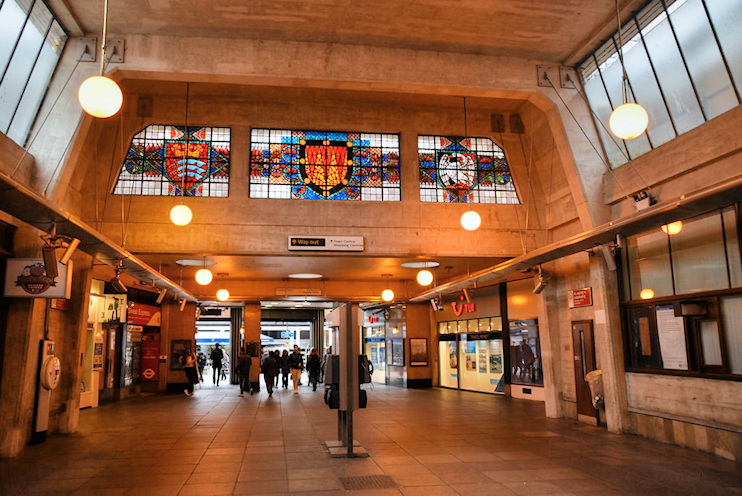Uxbridge
Uxbridge, Hillingdon
The administrative and commercial centre of the borough of Hillingdon, situated on the western edge of Greater London, south of the Western Avenue

Uxbridge’s name almost certainly derives from the Wixan tribe who settled various parts of Middlesex in the seventh century. Their bridge would have crossed the River Colne. However, no document recorded the existence of the village until the mid-twelfth century, when it was called Wixebrug.
St Margaret’s church began life as a chapel of ease to Hillingdon church in the early 13th century. A market house was built by 1513 and soon afterwards a ribbon of timber-framed houses lined the Oxford road from the Colne to what is now Vine Street.
The Bennet family owned a mansion called The Place, where Royalist and Parliamentary representatives drew up an abortive treaty to end the Civil War in 1645. The mansion was later reduced in size and renamed the Treaty House. It is now a pub called the Crown and Treaty.
During the 18th century Uxbridge flourished as a coaching halt, with shops and inns on the High Street. The present market house was built in 1788.
The construction of the Grand Junction (now Grand Union) Canal in the 1790s brought industry to Uxbridge Moor and by 1801 passenger barges were running daily to Paddington. The transport links helped confirm Uxbridge’s supremacy over Hillingdon as a market town, particularly for corn.
Coach traffic continued to increase and the town had 54 licensed premises in 1853. Three years later the first railway station opened and road travel began to wane, with many inns and their stables converting to private dwellings. From the late 19th century, private housebuilding began to spread towards Cowley and Hillingdon, and subsequently to the north, encouraged by the construction in 1904 of the Metropolitan Railway terminus in Belmont Road.
The council built outlying estates after the First World War and in the 1930s demolished slum properties in the crowded centre. Uxbridge Lido opened in 1935 and has since been restored as part of the Hillingdon sports & leisure complex.
Designed by Charles Holden and Leonard Bucknell, Uxbridge tube station was rebuilt at its present location in 1938. Its most unusual feature is a panel of stained glass windows in the booking hall featuring local civic heraldry.

From the late 1960s the council embarked on the wholesale redevelopment of the town centre, paving the way for the present appearance of the shopping and leisure area. Two shopping malls now dominate the High Street: the Pavilions and the Chimes. Listed buildings in the Old Uxbridge conservation area have been refurbished.
In 1967 Brunel University relocated to a 170-acre plot in south-east Uxbridge that had formerly been the Lowe and Shawyer nursery and market garden. Following the closure of satellite campuses at Runnymede, Twickenham and Osterley, all the university’s departments are now based here.
Hillingdon civic centre was built south of the station in the mid-1970s in an original and influential style that avoided the grandly monumental approach taken by most town halls.
Upmarket apartment blocks have recently added a new dimension to Uxbridge’s residential profile, especially along the banks of the canal. In 2017 relatively tasteful plans to redevelop the former Randalls department store prompted reactions at Get West London that included “Uxbridge is finished” and “this country has had it”. However, Hillingdon councillors were less dismayed by the proposal for around 60 flats and space for shops, retaining the original modernist building, and they approved the scheme unanimously.
Former London mayor Boris Johnson has been member of parliament for the constituency of Uxbridge and South Ruislip since the 2015 general election.
